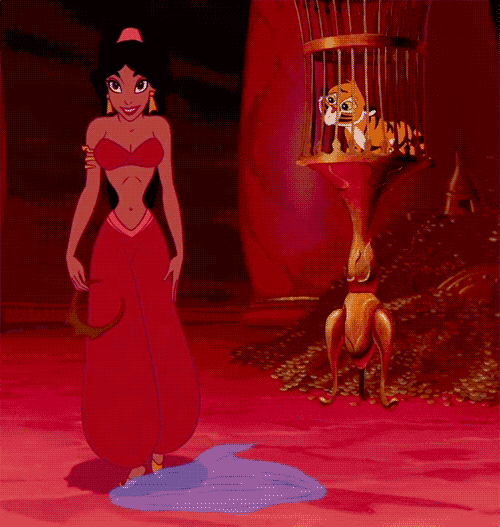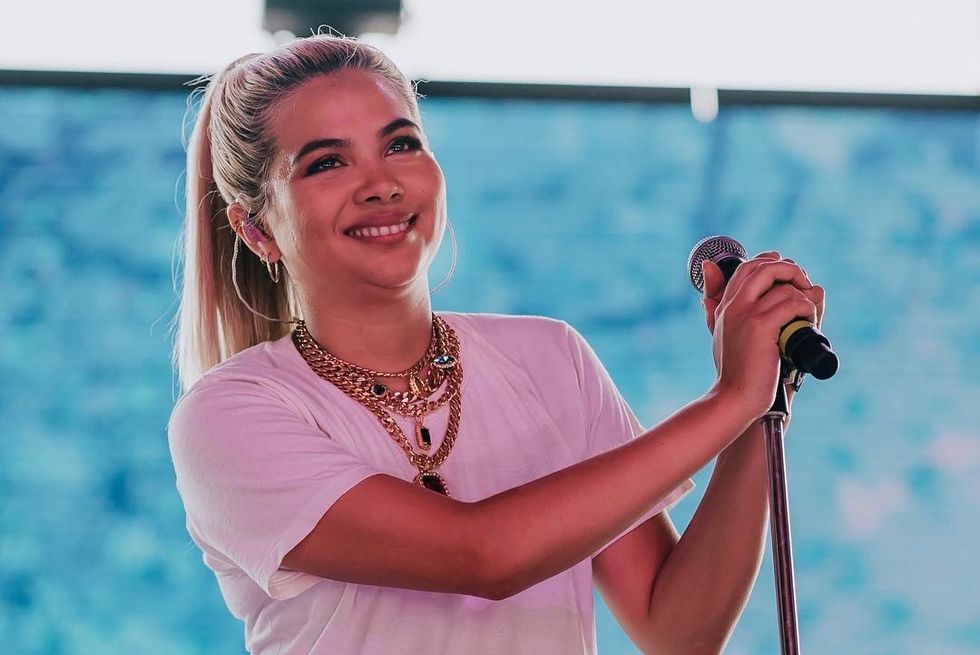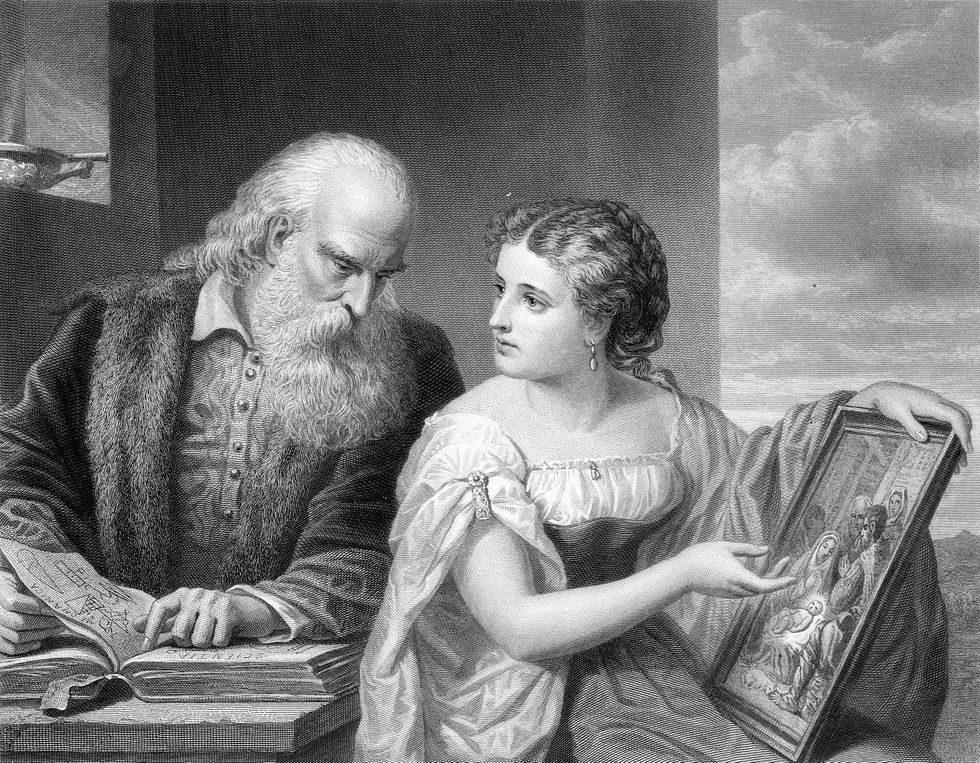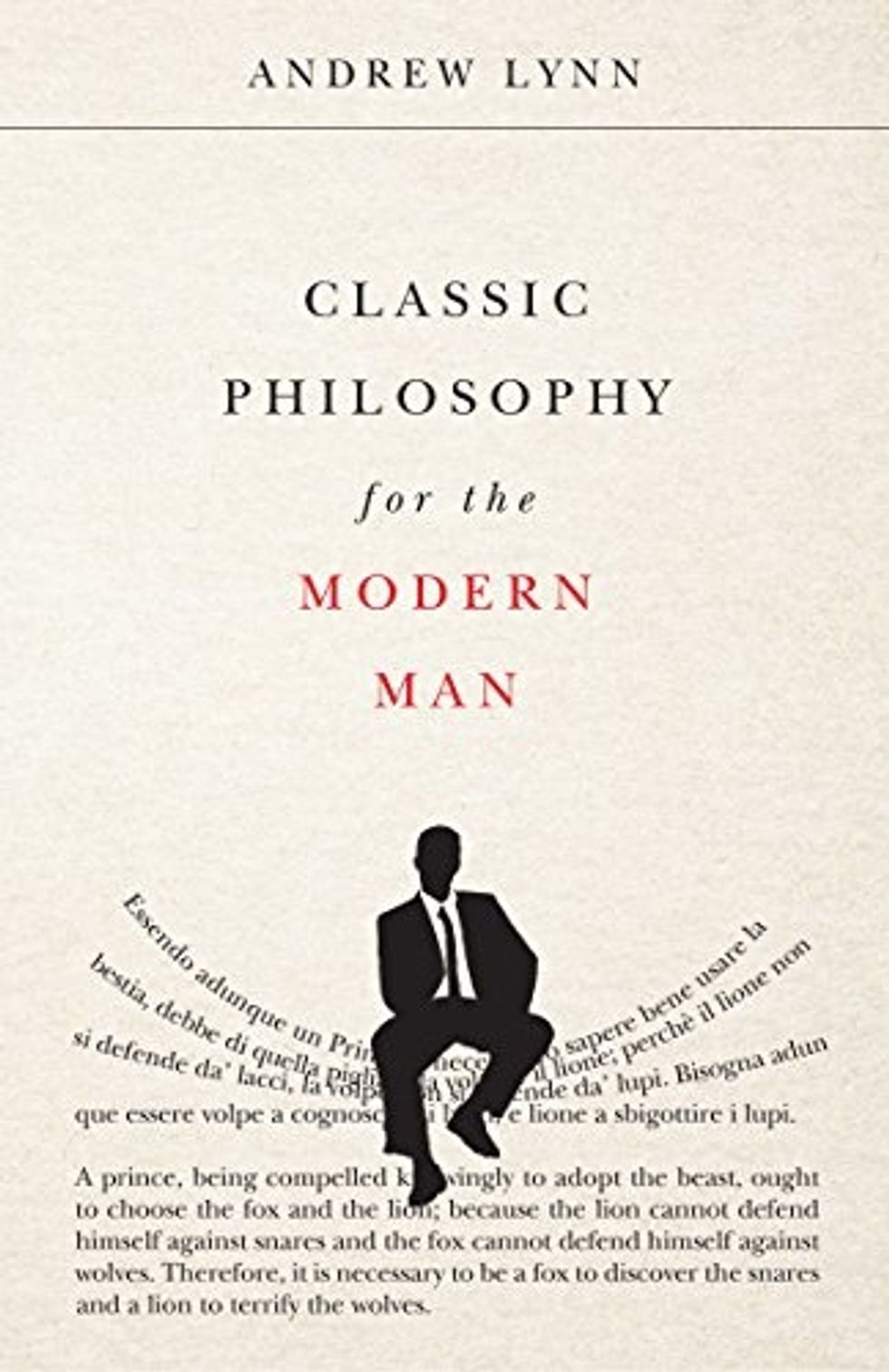What The New "Aladdin" Got Right That "Beauty And The Beast" Got Wrong
If Disney's reimagined version of "Beauty and the Beast" left you unsatisfied, get to the theater: the new "Aladdin" delivers.
This article contains spoilers for Disney's new live-action "Aladdin" (2019), in theaters now.
Disney's recent initiative to adapt some of its most beloved animated classics into live-action films, beginning in 2015 with "Cinderella" and continuing most recently with "Aladdin" (2019) and "Dumbo" (2019), seems to serve a two-fold purpose: first, to make more money off of stories that have already proven to make money (with a double-impact audience demographic of both children and nostalgic adult fans); and second, to give these classics an update which brings Disney a bit closer to entering 21st century society. For example, Josh Gad's portrayal of LeFou is implied to be gay in "Beauty and the Beast" (2017), and Howard Ashman's lyrics to "Arabian Nights", the opening song for "Aladdin" that has a controversial history, got a more culturally-sensitive 2019 reboot:
Where you wander among
Every culture and tongue
It's chaotic, but hey, it's home
is used to describe the fictional city of Agrabah (based on multiple blended Asian cultures), rather than
Where it's flat and immense
And the heat is intense
It's barbaric, but hey, it's home.
These changes are necessary both for Disney to stay a part of many people's futures, and for its present all-powerful reign to be inclusive of those people.
Case in point: me. I grew up loving Disney movies, especially Disney Princess movies, but the older I get and the more I learn about the effects of media and representation on society, the more I grapple with the idea of one day sharing my favorite childhood films with my (potential) future kids. I don't want my children to grow up with a heteronormative, whitewashed view of the world. I don't want them to grow up feeling pressured to fit into gender stereotypes or to fall in love with anyone who flatters them.
Fortunately, with the positive tweaks found in Disney's live-action remakes, I feel much more confident in sharing these stories with future generations. However, that doesn't mean Disney is without its failings in these new revivals.
The promise of change breeds the hope of complex, well-rounded, strong female characters. Especially in Disney's princess movies (AKA romance movies), it's important that the leading women are given their own lives and personalities outside of their love stories. Disney has actually done a pretty great job with this so far, especially in comparison to the original animated films, but I still found myself disappointed after the curtain closed on Belle's happily ever after.
A Brief Overview of Two of Our Favorite Classic Disney Princesses
If we put aside the debated components of bestiality and Stockholm syndrome the "Beauty and the Beast" story is commonly criticized for, the original Disney animated movie might have "Aladdin" beat in terms of how the lead women are portrayed and represented. To start, Belle (the "Beauty") is given a place in her film's title, and unlike Jasmine, she is given a solo song to sing. Additionally, and perhaps most importantly, "Beauty and the Beast" has a cast that includes several female characters (mostly in the castle with the Beast) who have speaking and singing roles and play important parts in the plot of the film. In "Aladdin", on the other hand, Jasmine is the only woman who has more than a quick singing line or who is important at all to the story.
Both films deserve credit, though. These stories feature two of the more independent and empowered Disney princesses that were created prior to the 2000s, and one of the few Disney princesses of color.

Rather than falling in love at first sight, both women take their time, face trials, and don't pursue romantic feelings until their men have proved themselves to be both good people and good matches for them. Both women know their worth, and that they're uninterested in living only the life that men have told them they can have.

Belle is an avid reader and Jasmine spends her time sneaking out of the palace and feeding hungry children. While one hobby each doesn't give them a ton of dimension, it is evident that both women (like real-life women) possess qualities other than "pretty". Both women are beautiful, but Belle is also smart and imaginative and Jasmine is kind and daring. Establishing interests is also a win, specifically for Disney, as Belle and Jasmine do not just sit around and wait for a prince to sweep them off their feet, unlike some princesses we know (I'm looking at you, Snow White).
In both movies, there is a male villain who seeks power, glory, and the leading lady's hand. While their princes officially defeat the bad guys, Jasmine and Belle are both instrumental in saving themselves and the people around them. Belle returns to the Beast and her friends at the castle to warn them of Gaston's plan to kill the Beast. Jasmine flatters Jafar to distract him while Aladdin arrives on the scene.
Belle and Jasmine 2.0
In the new live-action films, Belle's and Jasmine's storylines are substantially deepened. Both women are given more backstory than they were before. Their origins and family ties are further explored, giving them more layers as people.
Belle is given a whopping three hobbies: reading, inventing, and teaching the girls of the village to read. (Her invention is a horse-powered washing device so that she can read while her laundry is done.)

Other than this, "Beauty and the Beast" doesn't change much about Belle. As I mentioned before, the story already had more female representation going for it than "Aladdin". But the new "Aladdin" does not back down from the challenge of catching up.
Like Belle, Jasmine is given several new pastimes: when not out exploring the city markets in disguise, she has spent her life reading up on leadership and history, studying maps, and learning the traditional dances of her kingdom.
In perhaps a first for Disney Princess movies, Jasmine is given a human, similarly-aged, non-related female friend. Granted, Dalia (played by Nasim Pedrad) is Jasmine's servant, but the two truly love and care for each other. The addition of Dalia brings not only an aspect of women's lives that is always ignored in Disney Princess films, but also the addition of a second female lead to "Aladdin".

Probably the most talked-about addition to the 2019 "Aladdin" is a full, belting, powerful song given to Jasmine (played by Naomi Scott). Written by Benj Pasek & Justin Paul, the song feels reminiscent of MILCK (Connie Lim)'s "Quiet", which became the unofficial anthem for the 2017 Women's March. "Speechless" is a timely piece, following on the heels of the #MeToo Movement, which has empowered women to speak out, or to not "go speechless".
Speechless (Full) - Naomi Scott
At the point in the film that Jasmine sings this song, she has just been captured by the royal guards on Jafar's orders (he is the Sultan at the time, via a Genie wish). As she sings, the men around her disappear one by one from her mind, and she decides that she won't leave without a fight. She calls for Hakim, one of the guardsmen, and reminds him of all that her family has done for him and their people while they've been in power. She tells him that doing the right thing doesn't always mean doing what you're told, and he listens to her and turns on Jafar.
As in the the animated movie, it's still ultimately Aladdin who saves the day, but in this version, her assist of stalling for time comes with much more of a "bang" and without the need for a Leia-esque slave outfit or the twisting of any beards.

"Aladdin" Did It Better
While both movies made considerable changes for the better, Jasmine's revamped story turns out much more satisfying than Belle's. At the beginning of "Beauty and the Beast", we are introduced to a Belle who has invented a contraption to free her from the duties borne by women. She is a mentor for young women (who are not allowed in school) and she is judged and shunned for it. She is seen by everyone as odd for not wanting to marry a mean-but-muscular man and settle down in a domestic, stationary life.
It seems surprising, then, that once the dust clears at the end of the story's conflict, Belle is content to just be a princess in a castle, attending fancy balls and doing whatever it is that royal wives do. Where is the Belle who would use her newfound platform to advocate for allowing women in schools; who would open up the big, beautiful library her prince gifted her to the public; who would offer free adult and children's literacy courses to the women of the kingdom; who would decree that her washing "machine" be placed at every well in the kingdom for all to use if they choose; and who would open a workshop (maybe even with her father) to work on inventing more gender-equalizing devices?
Maybe it's supposed to be implied that Belle continues her work advocating for the women of the kingdom, but after seeing such a strong beginning with Belle's invention and her reading lessons and her "wanting more", I think we deserve to watch her hard work and ambitions pay off.

Meanwhile, in a large change from the 1992 film, "Aladdin" (2019) sees Jasmine advocate for herself and become the Sultan of Agrabah. Her father changes the law of the land to allow a female Sultan, whereas in the old film, he only allows her to marry whomever she pleases (presumably, this makes Aladdin the next Sultan).
Jasmine has studied her whole life to be a good leader to her people, and she proves that she can be through her kindness to the village children, her strength in standing up for what's right (read: opposing everything Jafar says), and her quick thinking in a time of crisis when she convinced Hakim to stand by her family's side.

The writing of women in both the live-action "Aladdin" and "Beauty and the Beast" is handled with much more care than in the original animated films, and is done rather well. The characters of Jasmine and Belle are strong and multi-faceted. But while Belle's story started out with a bang and ended with a sad fizzle, Jasmine remained a force to be reckoned with throughout the entirety of "Aladdin", and she came out on top. After "Beauty and the Beast", a beautiful film shadowed by unfulfilled promise, Disney redeemed itself with "Aladdin".













































